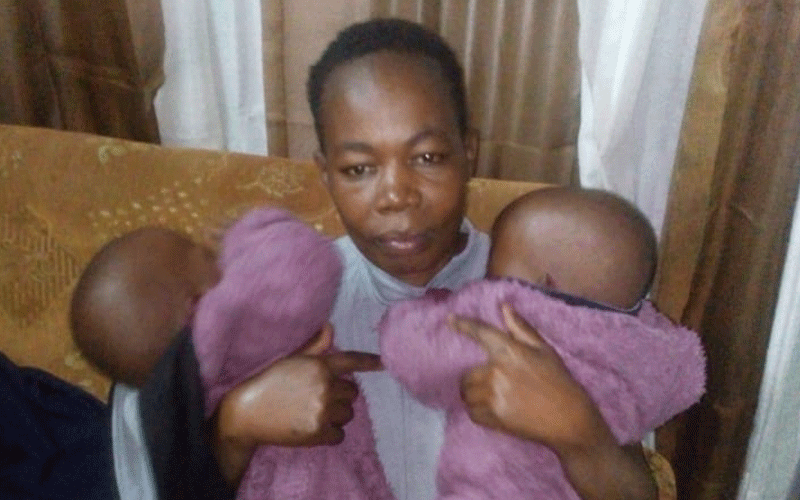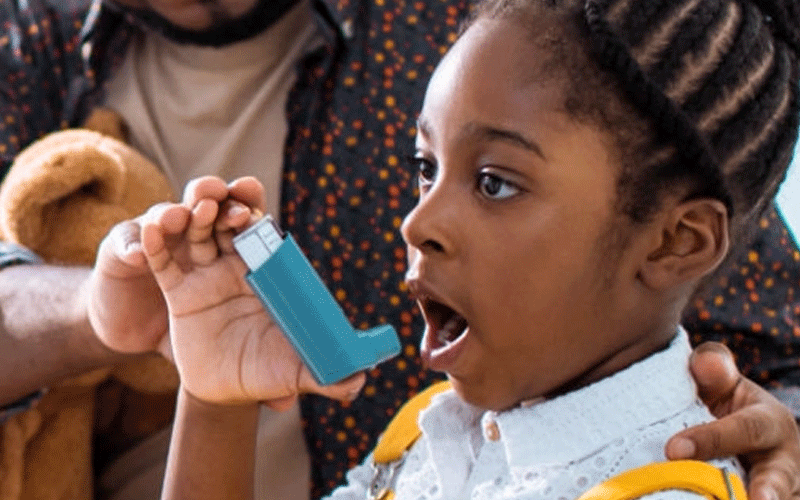Children gasp for air as pneumonia takes a deadly toll

Evelyn Makena @evemake_g
Dusk was quickly approaching, but antibiotics had done little to ease the strained breathing of Emily Awour’s infant daughter.
Inside their home in the densely populated Kosovo area in Kiambiyu slums, Nairobi Awour tried to comfort her restless child.
It had been a week since her daughter; one among her nine-month old triplets had been diagnosed with pneumonia at a local hospital.
“She was given medication and begun recuperating. But after a week, the complications intensified,” says Awour.
When Awour’s husband came home from work that evening, he rushed the child to a hospital in Buruburu, but she succumbed while being attended to.
Barely a month after the unfortunate events that unfolded towards the end of October this year, the 27-year-old mother of four believes her daughter’s life could have been saved if the diagnosis was made earlier.
At the time of their birth, Emily’s daughter, the smallest among the three, weighed only 1.3kg while the other two boys weighed 2kg and 1.9 kg.
“She had chest complications and would breathe with a grunting sound. She was put in a nursery and we stayed at the hospital for two months,” remembers Awour.
Even after being discharged, the breathing difficulties persisted. For nine months, Awour visited different facilities and got medication to treat the child’s chest complications without really testing her to identify the root cause.

At nine months, the little girl was weak, her neck and legs unstable compared to her brothers.
Fatal disease
Pneumonia is one of the fatal infectious diseases killing 2.5 million people in 2019, among them 627,000 children.
In Kenya, 15 per cent of child deaths in 2018 were due to pneumonia and in 2017, it was the second biggest killer among children under five.
Caused by viruses, bacteria or fungi, pneumonia is an acute infection that affects the lungs and respiratory system.
The infection, which causes a patient’s lungs to fill with fluid, making it difficult to breathe, is a common cause of death in children under five in Africa.
Non completion of immunisation is one among the main causes of pneumonia on the continent, according to Dr Benard Langat, Programme Director, HIV, TB, Malaria and NCDs at Amref Health Africa.
The World Health Organisation (WHO) has identified immunisation against Haemophilus influenza, pneumococcus, measles and whooping cough as one of the most effective ways to prevent pneumonia.
“Other causes include, poor water sanitation and hygiene practices as well as environmental factors such as indoor pollution as a result of cooking and heating in homes with firewood or kerosene, overcrowding, especially in informal settlements and smoking,” says Langat.
Dr Catherine Kanari, Clinical Business Lead, Amref Health Africa, adds that general community awareness on tackling environmental factors such as indoor pollution can reduce the number of children that fall ill from pneumonia.
“Additionally, appropriate health seeking behaviours once symptoms are experienced and completion of treatment especially for bacterial pneumonia to avoid antibacterial resistance is important in fighting the disease,” she says.
Adequate nutrition, starting with exclusive breastfeeding for the first six months of a child’s life and appropriate weaning improve immunity to fight infections such as pneumonia.
Timely diagnosis and appropriate treatment are important to reduce deaths among children with pneumonia.
In 2017, Kenya adopted the use of amoxicillin dispersible tablets as a first line treatment for non-severe pneumonia in accordance with WHO guidelines.
The dispersible tablets are effective as they do not require refrigeration, dissolves in water and assures accurate dosage, according to information on Ministry of Health’s website.
Use of the tablet, Catherine notes, has greatly reduced mortality caused by pneumonia in children.
Symptoms of the disease include fever, coughing, headache, shallow breathing, sharp chest pain, fatigue, loss of appetite, sweating and shaking chills.
Experts say the ongoing global Covid-19 pandemic could increase pneumonia deaths.
Stop Pneumonia, an initiative by International Vaccine Access Centre, IVAC estimates that Covid-19 could add 1.9 million to the death toll this year.
Disruptions to health care services during the pandemic are estimated to cause an additional 2.3 child deaths, 35 per cent from pneumonia and sepsis.
Lang’at notes that both pneumonia and Covid-19 bear a close connection. Both diseases affect the lungs and can lead to death.
While pneumonia is caused by viruses, bacteria and fungi, Covid-19 is caused by SARS-Cov 2 virus. Pneumonia is one of the complications of Covid-19 and is difficult to treat.
Bacterial pneumonia can be treated with antibiotics while Covid-19 has no approved treatment, but requires supportive care.
“Viral pneumonias are hard to treat, therefore pose complications in management.
These infections are better approached by prevention, which means developing and administering vaccines,” he adds.
Health services
Covid-19 continues to complicate the treatment of pneumonia, through delay in diagnosis as the attention of health services has shifted to respond to the outbreak.
Avoiding health facilities due to Covid-19 stigma may lead to avoidable complications and loss of life according to Catherine.
Winfred Nduku, 30 has been a victim of delayed pneumonia diagnosis during the Covid-19 pandemic.
For four months, Nduku who washes clothes to earn a living had been experiencing a sharp pain on her ribs and frequent shaking chills.
“At first I thought it is just ordinary cold since my work involves touching cold water for prolonged periods,” she says.
Every time she went to hospital and explained her symptoms, she would be given painkillers.
But, as time went, she was getting weaker, becoming easily fatigued and lost appetite.
Its only two weeks ago that Nduku underwent a test that showed that she had pneumonia. Nduku who is still under medication says she is already feeling better.
Kenya is striving towards the goal of ending childhood deaths caused by pneumonia by 2025 in line with the Global Action Plan for Prevention and Control of Pneumonia and Diarrhoea (GAPPD) launched by WHO and Unicef in 2009.
Under the plan, the country has embedded some of the recommended action plans for these two diseases including advocacy for exclusive breastfeeding and standardised pneumonia diagnosis protocols and treatments.
“Still, a lot remains to be done to achieve this ambitious goal. We have come a long way, but we still need to do more in communities,” says Langat.








